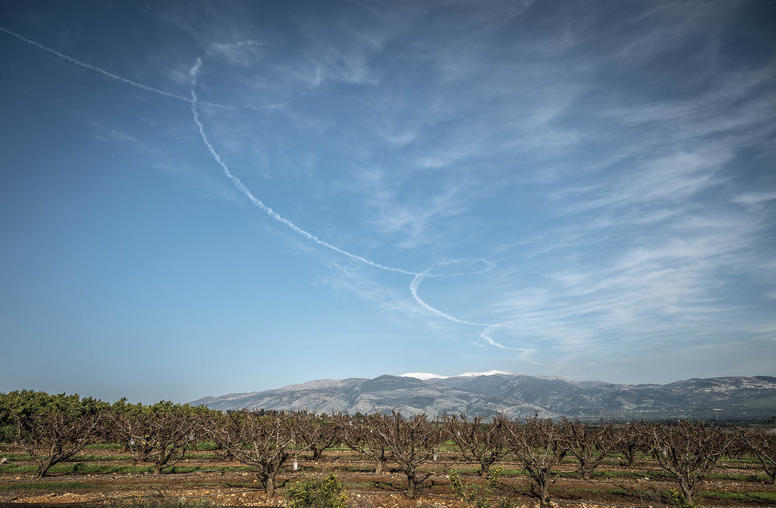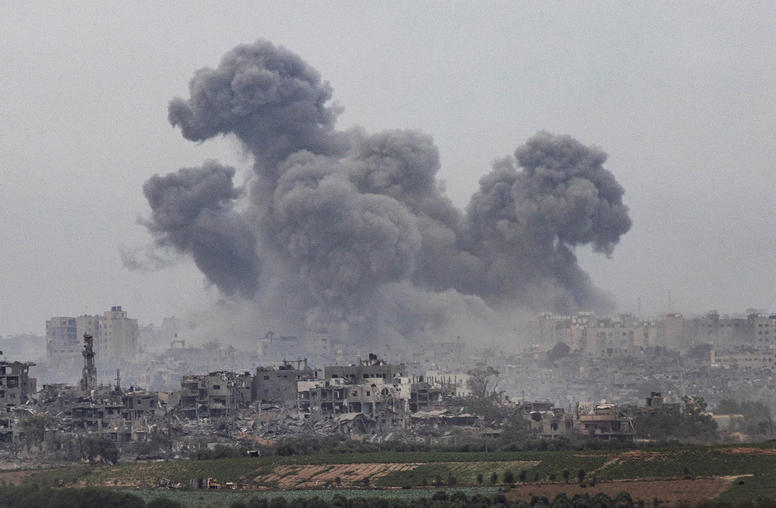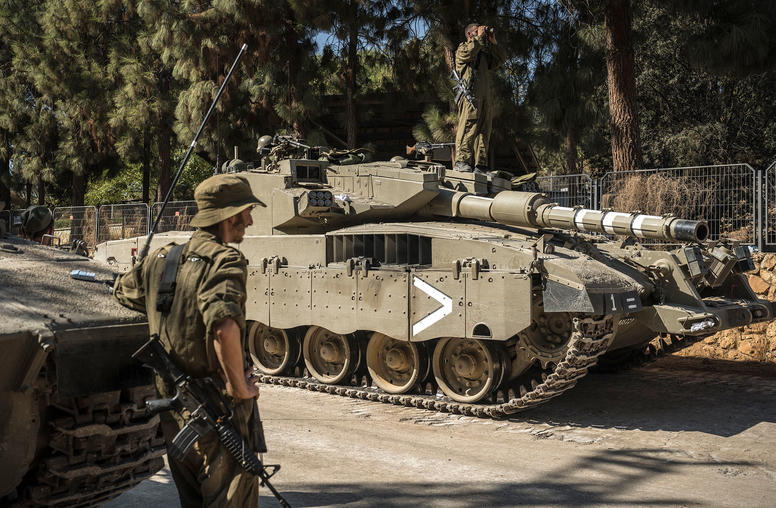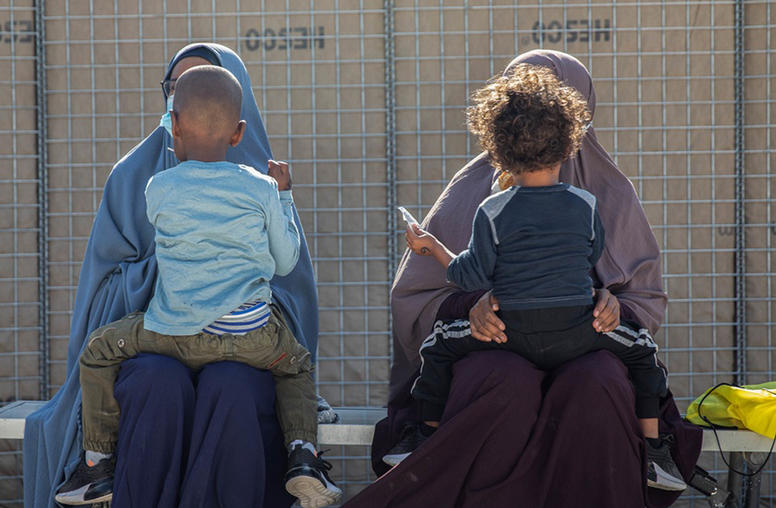Syrian Uprising: Looking In, Looking Out
Amr al-Azm is an active member of the Syrian opposition and a professor of Middle East history and anthropology at Shawnee State University. This Peace Brief aims to examine the deteriorating relationship between the Syrian regime and its neighbors and the possible emergence of a “Benghazi scenario” involving Turkish military engagement.
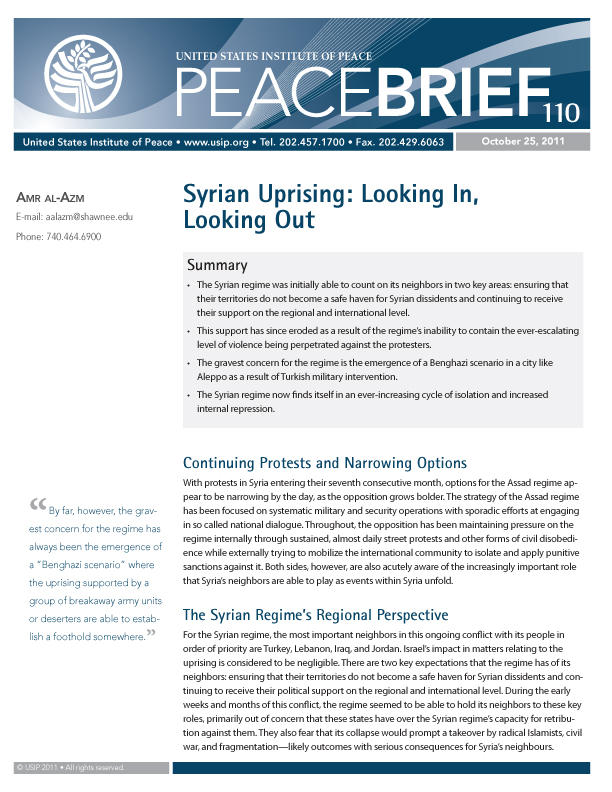
Summary
- The Syrian regime was initially able to count on its neighbors in two key areas: ensuring that their territories do not become a safe haven for Syrian dissidents and continuing to receive their support on the regional and international level.
- This support has since eroded as a result of the regime’s inability to contain the ever-escalating level of violence being perpetrated against the protesters.
- The gravest concern for the regime is the emergence of a Benghazi scenario in a city like Aleppo as a result of Turkish military intervention. The Syrian regime now finds itself in an ever-increasing cycle of isolation and increased internal repression.
About This Brief
This brief is part of a series examining the regional dimensions of Syria’s popular uprising. The Institute invited leading experts from the U.S. and across the Middle East to identify key vectors of influence that Syria’s neighbors are bringing to bear on the conflict, to forecast how the ongoing conflict in Syria will affect the delicate and volatile regional balance of power, and to examine how the Syrian opposition and the Syria regime are factoring in regional and cross-border dynamics. The series was edited by USIP’s Steven Heydemann, senior adviser for Middle East Initiatives, and Scott Lasensky, a senior program officer. Through this series, workshops and ongoing programs that bring together experts, civil society figures and officials, the Institute aims to provide applied analysis and on-the-ground conflict management tools in support of political transitions across the Arab world.
Amr al-Azm is an active member of the Syrian opposition and a professor of Middle East history and anthropology at Shawnee State University. This Peace Brief aims to examine the deteriorating relationship between the Syrian regime and its neighbors and the possible emergence of a “Benghazi scenario” involving Turkish military engagement.
Explore Further
- Turmoil in Syria: Reshaping the Middle East?
USIP publishes a series of briefs on how the Syrian uprising is affecting the regional neighborhood
